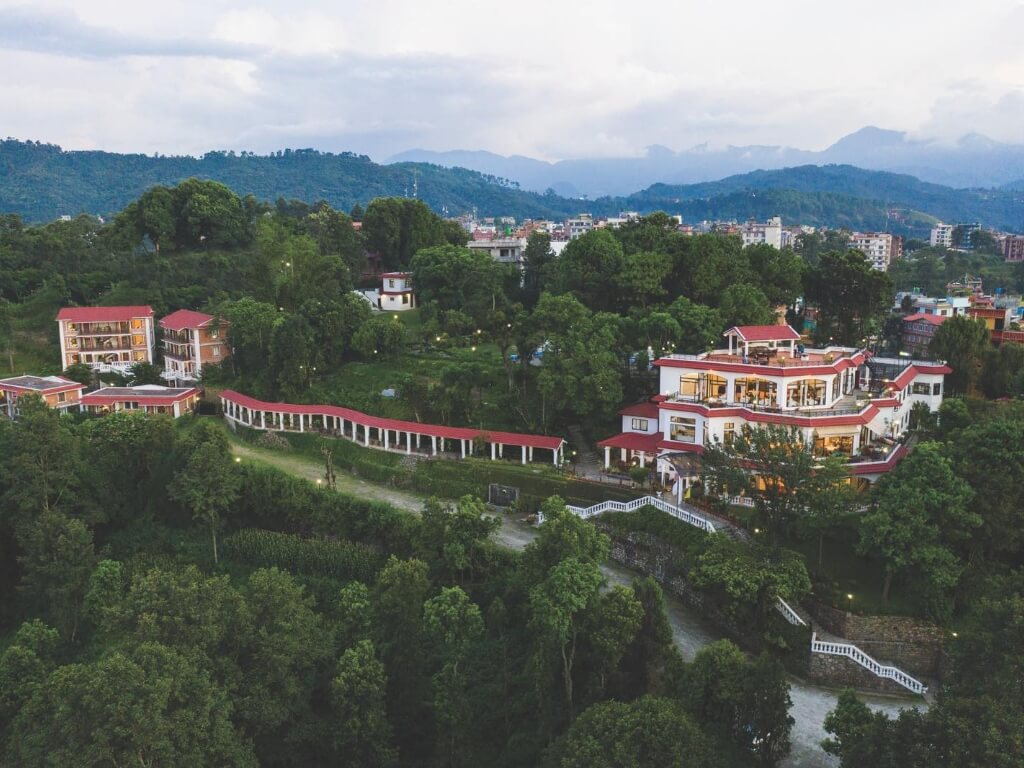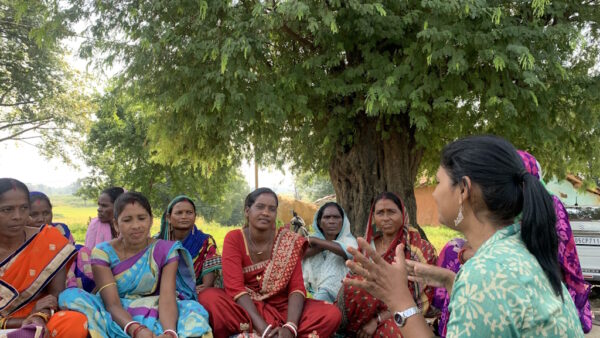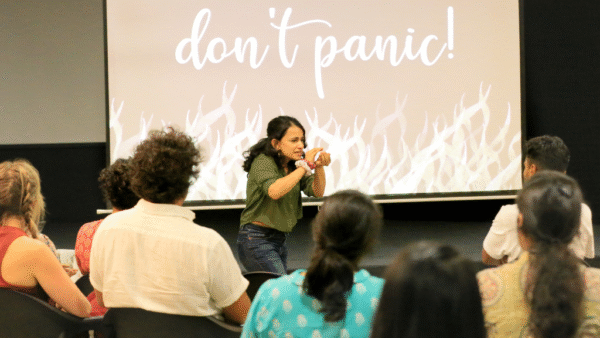Dhulikhel lies around 30 kilometres east of Kathmandu. The small town is internationally famous for its views of the snow-capped peaks of the Himalayan range, artistic temples and monuments. Situated in the mid-hill region of east-central Nepal, the town located along two national highways is at an elevation of 1,441 metres. Lately, it has emerged as a major tourist destination. Less known about Dhulikhel is its growing water scarcity which, inevitably, means water inequity too.
The Dhulikhel municipality comprises 12 wards and its population of nearly 33,700[1] is a melting pot of various caste and ethnic groups like Newars, Brahmins, Chhetris, Tamangs and Dalits. With the inclusion of two villages from its vicinity, an ever-increasing floating population of tourists living in more than a dozen hotels, the Kathmandu University campus with its students, and the town’s hospital, the demand for water has been rising in Dhulikhel. Water for drinking and other purposes has become scarce over the past few years and has reached a critical juncture, as pointed out by a recent study[2]
In this growing battle for water in this picturesque and rapidly urbanising town, the poorer native people are being left behind, especially from the areas that lie just outside its urban core. “The voices of the community living here are neither heard nor documented in the decision-making process. The Dhulikhel Drinking Water User Committee never bothers to ask about the water challenges we face, its decision-making process is also exclusionary. Although the participation of women and ethnic communities is technically ensured, it hasn’t practically worked,” said a resident of ward 2, requesting anonymity.
Climate Change has compounded the problem of water scarcity in Dhulikhel. Recent research[3] showed the declining trend of annual precipitation and the stream flow of Roshi River, which is a major source of drinking water supply to Dhulikhel’s residents. The climate impact has manifested in the form of less and irregular rainfall, decrease in wet spells, and drying of natural springs, according to this three-year study[4] in Dhulikhel and Dharan.
Dhulikhel’s situation is not different from other water-scarce towns around the world. Water security has become a complex issue as rapid urbanisation and climate impacts are worsened by ineffective water governance. As it has happened globally, the inaccessibility of water here is not only about the unavailability of water but also about its inequitable distribution. With limited access to piped water connections, the poor and those living in outer areas spend more time fetching water, leading to physical and emotional stress.[5]
Studies[6] show that the poor and low-income people are highly vulnerable to water scarcity, and social exclusion worsens their access to water. The Global Water Security 2023 Assessment Report of the United Nations states that three out of every four people in the world live in water-insecure countries,[7] and the absence of safe drinking water and sanitation contributes to deaths. Water security has emerged as an important element of environmental justice. Water justice is now a subject of scholarly studies; the analyses cover a vast ground of social dynamics, politics and power which result in water governance.
Water access and justice are closely allied environmental justice[8] and to people’s Right to the City. According to the World Charter on the Right to the City,[9] the right to water means that city administrations guarantee all citizens the right of permanent access to public services of drinking water, among other aspects. It spells out the need to ensure the participation of all people and civil society organisations in this. At the heart of this concept lies the intent to provide all the city inhabitants the power to shape the decisions and conditions affecting their lives – this is not happening in Dhulikhel.
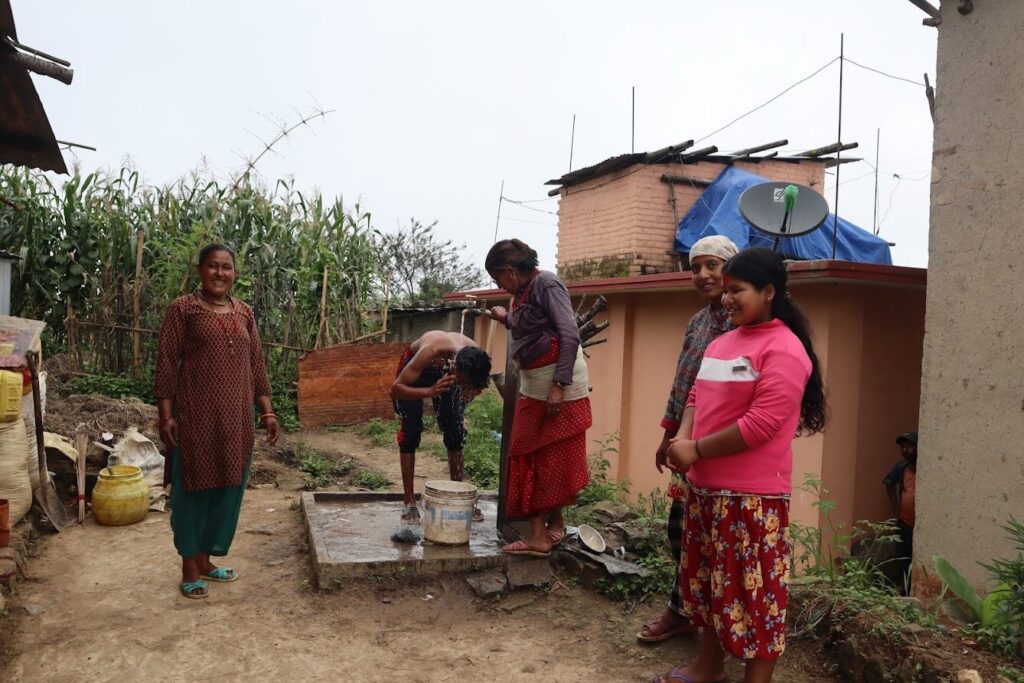
Photo: Jyoti Shrestha
How the water supply project began
Dhulikhel has historically been a trade hub linking Nepal with Tibet. As businesses grew, people thronged to the town. The increasing population put pressure on its rudimentary water supply and infrastructure which led to the need for an extended drinking water project. Sanitation was also affected when people were unable to flush the water-saving “Sulabh” toilets constructed with training and help from India. Community leaders like Bel Prasad Shrestha and Shree Lal Makaju, among others, took the lead to set this right. Dhulikhel also took design cues from nearby cities like Bhaktapur, where the Germans launched a project to encourage planned communities and sanitary conditions.
Dhulikhel is unique in its layout – of the twelve wards, two are urban and six rural or peri-urban. A hilltop town with community-based water management practices, there is a deep divide between the core urban and newly-appended rural areas in water access and quality. The urban parts have well-developed infrastructure, education, communication, public utilities like drinking water, and electricity. The majority here are Newars and many of them engaged in business are economically well-off. They also have an important say in water-related decisions.
The less-urban wards have less-developed infrastructure, ill-developed communication and health systems, and face water scarcity. Here, people have limited participation in decision-making. Rupa Sunar, member of Dhulikhel Drinking Water User Committee, ward 10, believes that committee members were sidelined. “Although there is a provision of 33 percent representation of women in this committee, our voices are not heard at decision-making,” she said, “The male members usually make decisions which is really unfortunate. More importantly, women living in rural wards barely get time to participate even. In the name of empowering women, such meetings are an added burden for us.”
Historical and geographical dimensions
An important dimension of the inequities in water access is rooted in the history of its distribution. In 1986, Dhulikhel appended peripheral villages to become a municipality. While the core urban areas continued to get water from the three-decade-old plant of the Dhulikhel Drinking Water Supply Project (DDWSP), the residents of the newly-amalgamated rural areas had to rely on local springs. The DDWSP largely overlooked the need of these areas, breaching the agreement to provide water in the short-term by tapping local sources, and, in the long run, identifying alternative sources.[10]
Also, neither did these areas get representation in the Water User Committee nor was adequate and sufficient access ensured for them. This infuriated residents here. Coupled with drying springs due to Climate Change, their agitation resulted in them completely stopping water supply for the rest of the town for two weeks in 2008.
Geography plays a role too in the water inequity. The core wards get more supply because they are located at higher altitude while the peripheral wards at lower altitudes have limited water supply. However, even in the core areas, houses situated in sloping areas find it difficult to access water. Arjun Neupane, chairperson of ward 2, said to us, “Settlements in the peripheral areas are mostly on the hilltop which makes the lifting of water from rivulets extremely difficult.”
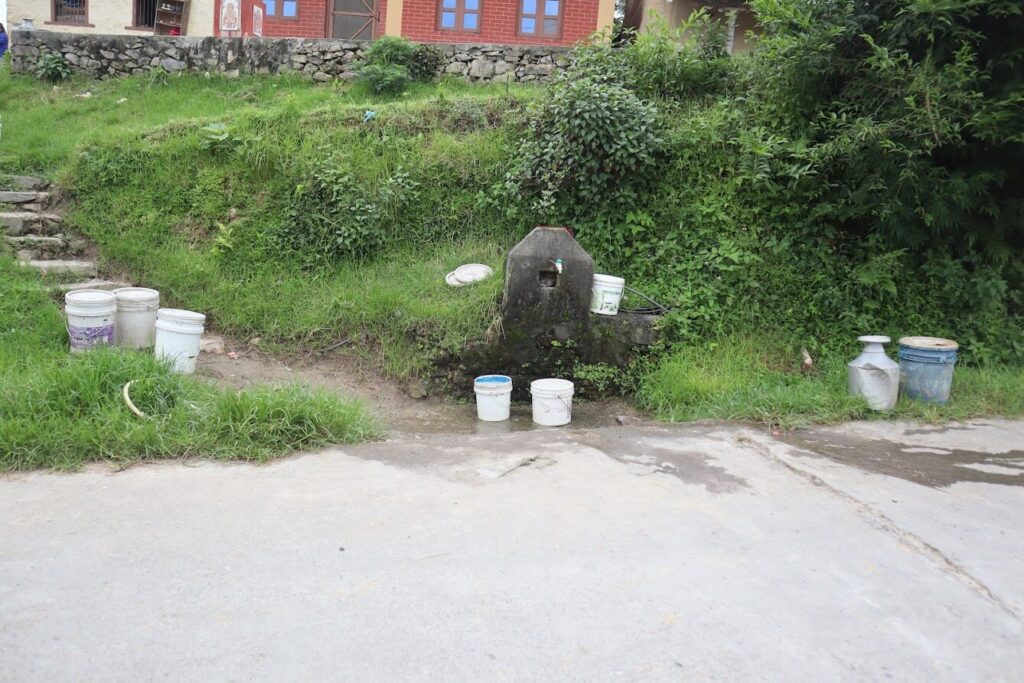
Photo: Jyoti Shrestha
Water war between urban core and periphery
This scenario has not significantly changed after adopting federalism in 2015 and a local governance restructuring drive in 2017 which was to provide improved services to village municipalities or gaunpalikas. Dhulikhel is one of the three municipalities of Kavre district – Banepa and Panauti being the other two — and was supposed to have a single water supply system under the Kavre Valley Integrated Water Supply Project which would include the peripheral wards too. This has not happened.
The project, supported by the Asian Development Bank (ADB), is nearing completion but authorities are more keen to incorporate old water treatment plants into the system rather than ensure water access to marginalised communities and peripheral wards. Mohan Prasad Lamichhane, chairperson of Dhulikhel ward 12, said, “The appended wards haven’t been able to get water from the Kavre project or the Dhulikhel project. The original agreement with the donors didn’t include providing water to peripheral wards, so we are suffering.”
The discrimination in water access has become evident. In a study conducted in 2022,[11] it was found that the residents living in the core of Dhulikhel get six hours of water daily while households in peripheral wards get for only three hours a day. Shreeram Byanju, member from ward 4, the urbanised part, asserted: “The water was originally meant for the people in urban areas. It is only sufficient for our settlement, our families will suffer if it is diverted. We don’t want to distribute it to other areas.” A water war is silently brewing here.
In the newer areas of the town, the quality of water is an issue too. A series of interactions by one of us pointed to the lack of good quality water as they rely on smaller schemes and local sources compared to the core urban areas which get water from the two projects. “As a member of the new ward, it is humiliating to be ignored by both the projects. Despite repeated negotiations, we haven’t been able to obtain water from either, we primarily rely on local springs which are also drying,” said Sunil Gautam, member, ward 9.
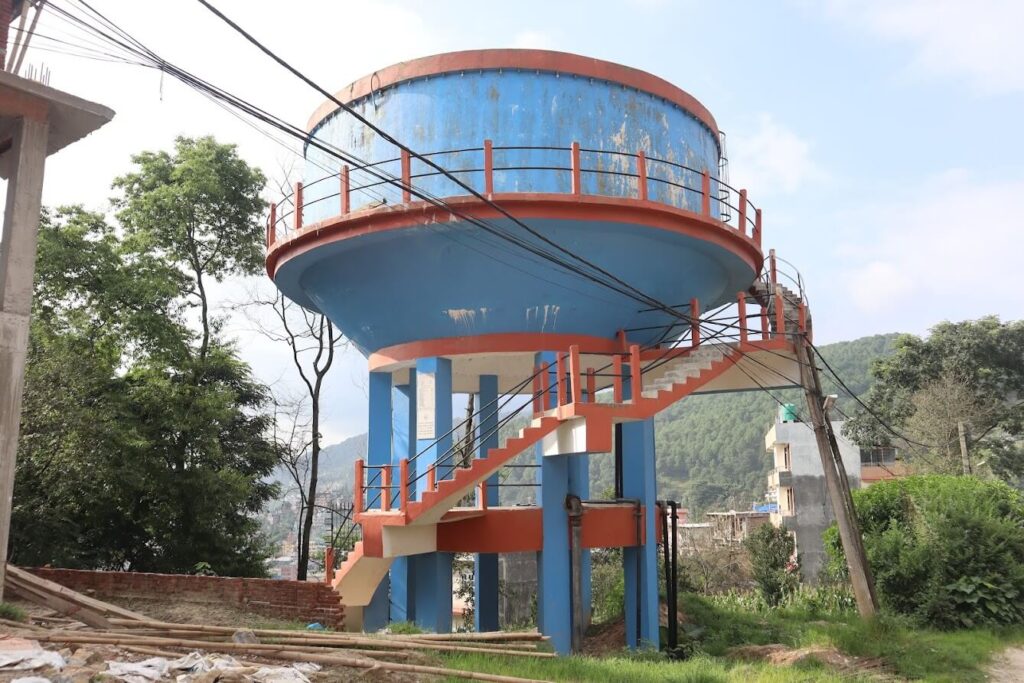
Photo: Jyoti Shrestha
Caste and ethnic dimensions
Dhulikhel’s water scarcity in select areas is deeply rooted in caste and ethnicity. The study by Pokharel and others in 2019[12] showed the conflict between Newars and non-Newars, and Dalits and non-Dalits, over water access. The Newars, with a rich historical legacy, enjoy political authority in core areas where they also control the economy through their businesses and enterprises. The outer or newly-amalgamated areas consist of diverse settlements with a poor population who have limited political control.
However, studies by one of us (Pokharel) shows that while caste-based discrimination may be slightly reducing, marginally improving the access to water for Dalits, in recent years, caste-based discrimination is still potent in these parts. Shraddha Batase, a resident of the peripheral ward 11, said, “We don’t face discrimination just because we belong to the Dalit group. The caste-based discrimination adds to the remote geographical access, and inadequate priority given to our wards.”
Dhulikhel’s story of water access is one of how caste domination is perpetuated by the practice of deliberate exclusion of certain communities from accessing water and from the local decision-making process of water supply. Nowhere is this more evident than in the neglect by the DDWSP which considers supplying water to the peripheral wards detrimental to the well-being of the core wards, thus pitting the less powerful against the more powerful.
Positive policy initiatives
The Dhulikhel municipality, under fire for its negligence to the new wards, adopted the ‘one house, one tap policy’ to improve water accessibility in all the wards. It also earmarked funds for deep boring in areas where the water problem is acute, including the new wards. “We have been trying our best to extend water supply to all wards. There is now water supply from 15 minutes to seven hours a day but due to the difficult topography, the hilly area households haven’t got adequate water. We are also facing problems extending the supply to the newly established wards in Dhulikhel after the federal restructuring in 2017,” said Dhulikhel Water User Committee member, Srijana Rimal.
Ashok Byanju, mayor of Dhulikhel Municipality, shared that out of the 17 ongoing drinking water projects, five are deep boring projects supplying water to some of the new wards such as Kavre (ward 9), Batase (ward 10), and ward 11. The aim was to enhance the water access to more than 1,200 households last year but the progress trickles in.
Some deliberative platforms have emerged too such as Paani Chautari.[13] A locally-led platform to foster science and policy interactions among water user committees, locals, representatives from adjacent municipalities, researchers, academia and media, it has helped develop an institutional mechanism to collaborate on water distribution. Such informal spaces allow people to speak where local policymakers listen and community water experts recommend measures to address the water scarcity. Six series of Paani Chautari were successfully held till February 2020 when the organisation ceased its work in Dhulikhel.
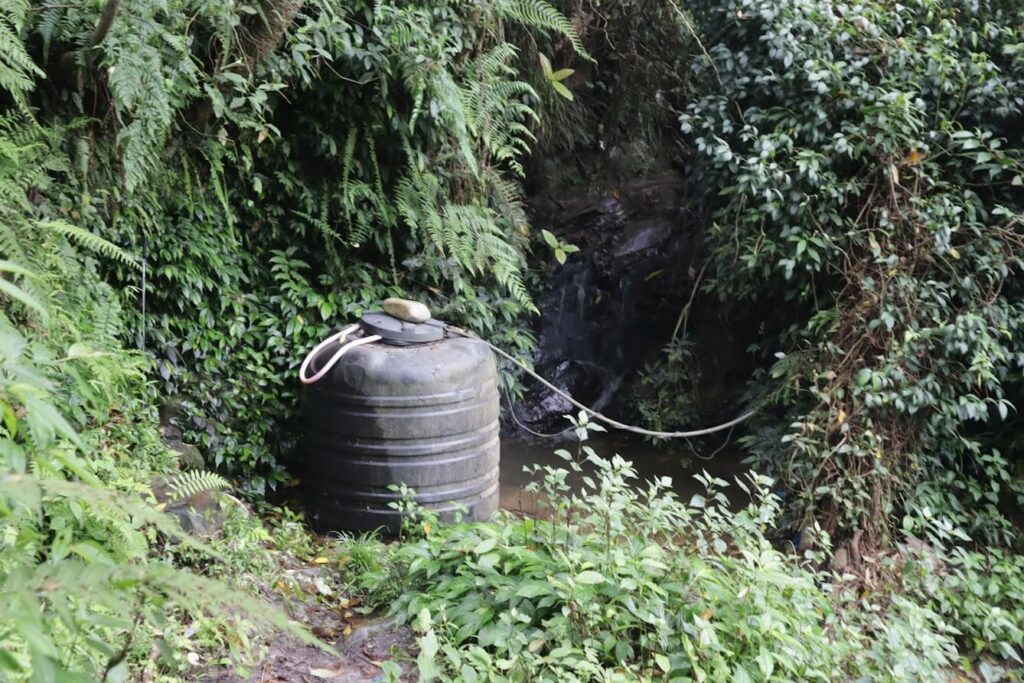
Photo: Jyoti Shrestha
Water security for environmental justice
Addressing water security in Dhulikhel is not only about water; it intersects with other issues such as gender and race which contribute to environmental injustice. This intersectional approach is about how multiple axes of marginality shape people’s identities and lived experiences. For example, water security in terms of reliable access to water, regular supply, good quality water and other factors help shape how families live and function – and the role of women.
This then impacts on gender issues such as gender work, time spent to collect water, gender health and so on. This multidisciplinary approach, combined with community participation and effective water governance, contributes to water security, and through it, to environmental justice. The discourse on environmental justice through water addresses the systemic inequities and injustices prevalent in the water supply system, gender being one of them.
The intricate issues of socio-political discrimination and unequal participation call for a renewed approach to water justice which is responsive to local communities. A comprehensive water plan in the spirit of collaborative governance accommodating the aspirations of diverse communities irrespective of their gender, caste or socio-economic and cultural background would be crucial in promoting sustainable water security outcomes – and therefore environmental justice.
Kushal Pokharel is an independent researcher and science communicator based in Nepal. His writings have appeared in leading national and international media outlets including research journals. His research interests span natural resource management, water security, Climate Change and development with a focus on public policy and governance. He also serves as a faculty of research methods and skills.
Chhatra Karki, a science journalist based in Kathmandu, Nepal, has rich experience in newspaper and online news portals. In recognition of his exceptional contributions, he was honoured with the Science and Technology Journalism Award from the Nepal Academy of Science and Technology in 2021. Chhatra’s expertise encompasses a wide range of topics, incl. environment, climate change, science, health, and current affairs.
This is the second essay of the QoC-CANSA Fellowship series on cities and Climate Change across South Asia. The first part can be read here.
Cover photo: Dhulikhel, Kavre by Dipak Thapa

